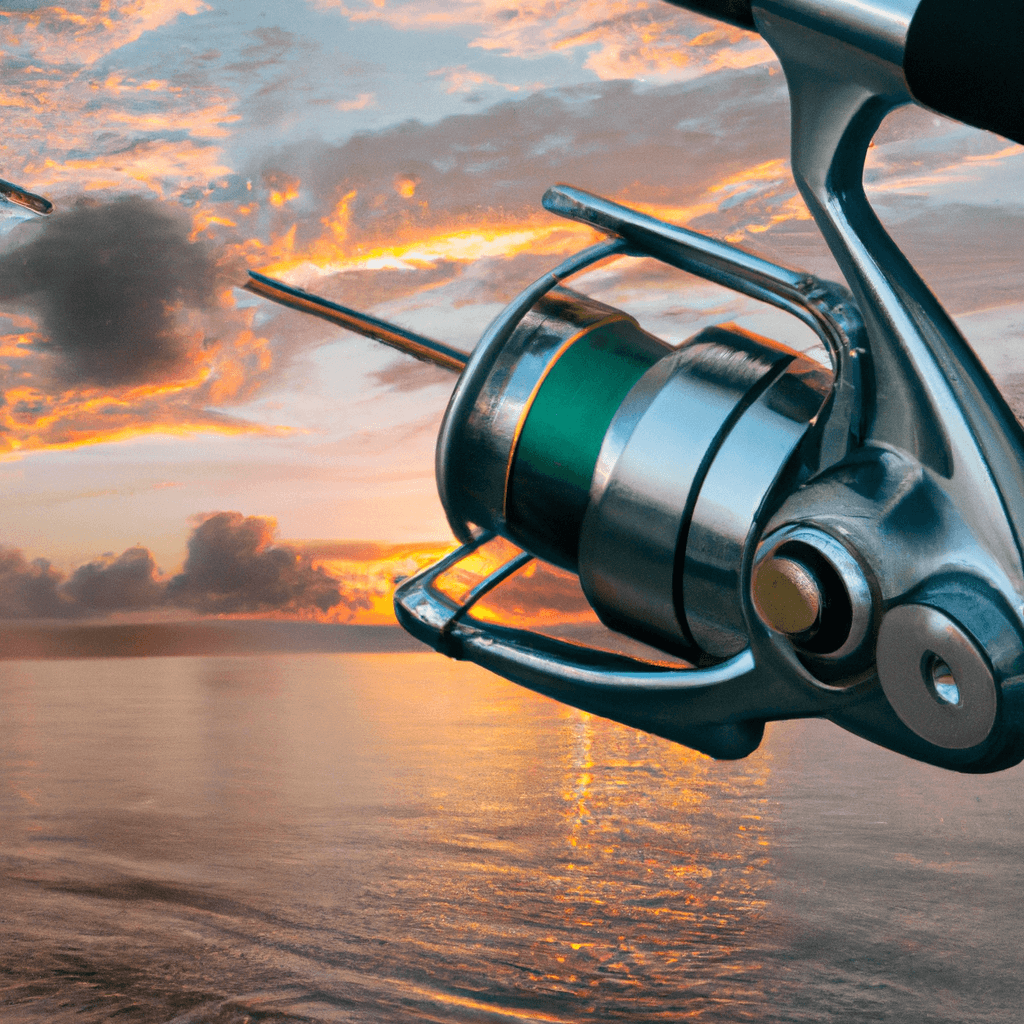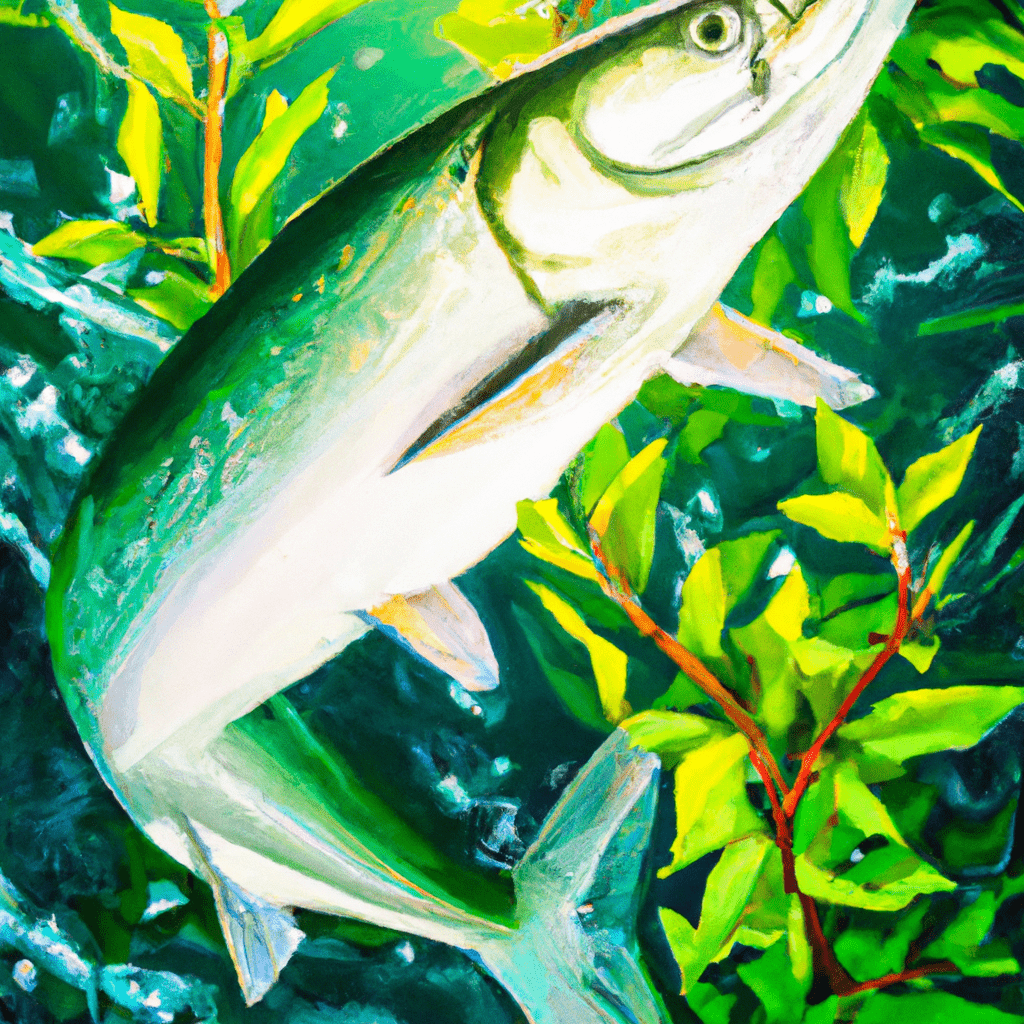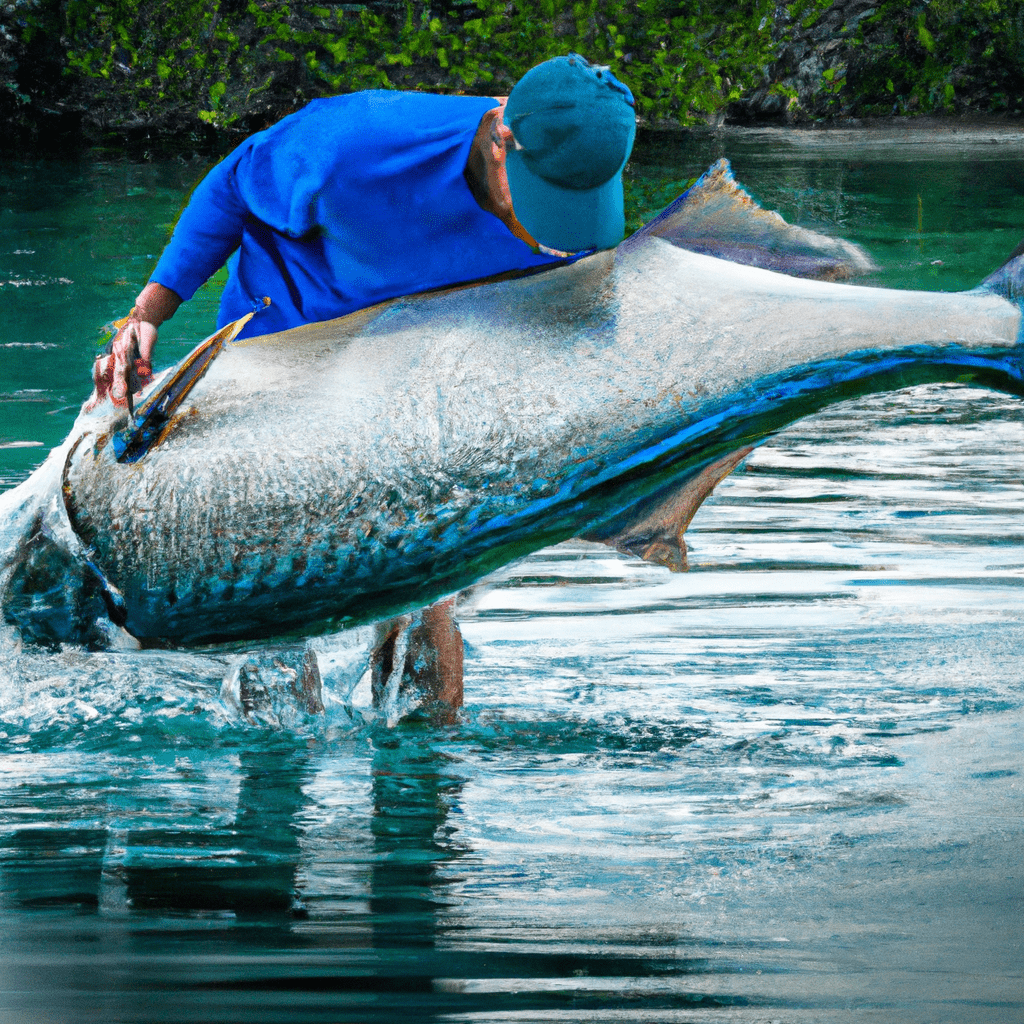Imagine standing on the edge of a vast, shimmering ocean, your heart pounding with anticipation. You’re about to embark on a journey to become an expert in the thrilling world of tarpon fishing.
In this article, we’ll guide you through the essential gear, teach you the techniques, and share valuable insights into tarpon behavior and habitat.
Get ready to plan the perfect fishing trip and learn how to safely land and release these majestic creatures.
Get ready to become a tarpon fishing expert.
Essential Gear for Tarpon Fishing

You’ll need a sturdy rod and reel for tarpon fishing. When it comes to tarpon fishing gear selection, there are a few key factors to consider.
Firstly, your rod should be strong and flexible enough to handle the weight and power of a tarpon. Look for a heavy-duty rod that has a high line capacity and a fast-action tip.
As for the reel, choose one with a high gear ratio for quick retrieval, as tarpon are known for their fast and powerful runs.
In terms of bait, the best bait for tarpon fishing is live or cut bait fish such as mullet, pinfish, or ladyfish. These baitfish are natural food sources for tarpon, making them irresistible.
Remember to match your bait size to the size of the tarpon you’re targeting for optimal results.
Mastering Tarpon Fishing Techniques

To become a master at tarpon fishing, you should practice various techniques and experiment with different strategies.
One technique is the ‘bow to the king’ method, where you lower your rod and lean back when the tarpon jumps, allowing it to take line without breaking it.
Another technique is the ‘circle hook’ method, which involves using a circle hook that’s less likely to be swallowed by the tarpon, increasing your chances of landing the fish.
When it comes to strategies, one popular approach is to fish near bridges or structure, as tarpon often congregate in these areas.
Another strategy is to use live bait, such as mullet or crabs, which can entice the tarpon to strike.
Understanding Tarpon Behavior and Habitat

To truly understand tarpon behavior and habitat, you must observe their feeding patterns and learn about their preferred environments. Tarpon are known for their impressive migration patterns, as they travel to different areas throughout the year in search of optimal conditions for feeding and breeding. They’re often found in coastal waters, estuaries, and nearshore habitats.
Here are some key points to consider:
- Tarpon migrate seasonally, following warmer water temperatures.
- They prefer areas with abundant food sources, such as baitfish and crustaceans.
- Tarpon are often found near structures like bridges, docks, and mangroves, which provide shelter and attract prey.
- They’re known for their unique feeding habits, often rolling at the surface to gulp air and prey.
Planning the Perfect Tarpon Fishing Trip

Make sure to set aside enough time to research and book your accommodations, as well as arrange for a knowledgeable guide who can help you navigate the best fishing spots for tarpon.
Planning the perfect tarpon fishing trip requires careful consideration of several factors.
First and foremost, choosing the best tarpon fishing locations is crucial. These locations should be known for their abundance of tarpon and their accessibility to fishermen. Researching online forums and speaking with local anglers can provide valuable insights into the most productive spots.
Additionally, selecting the right bait and lures for tarpon fishing is essential. Tarpon are known to be voracious eaters, but they can also be selective. Using live bait such as mullet or crab, as well as artificial lures like soft plastics or topwater plugs, can increase your chances of success. Remember to match the bait to the conditions and the preferences of the tarpon in the area.
Tips for Landing and Releasing Tarpon Safely

Use proper technique and equipment to safely land and release tarpon.
When it comes to tarpon fishing, it’s essential to prioritize the conservation efforts of these magnificent fish. Here are some tips to help you safely land and release tarpon:
- Use a sturdy landing net: This will prevent any unnecessary stress or harm to the fish during the landing process.
- Handle with care: Always wet your hands before touching the tarpon to protect their delicate skin and scales.
- Remove the hook quickly: Use a dehooking tool to minimize the time the fish spends out of the water.
- Revive the tarpon: Allow the fish to regain its strength by holding it in the water and gently moving it back and forth until it swims away on its own.
By following these guidelines, you can ensure that tarpon fishing remains a sustainable and enjoyable activity for future generations.
Tarpon fishing tournaments should also emphasize these practices to promote responsible angling and conservation.
Frequently Asked Questions
How Much Does a Typical Tarpon Fishing Trip Cost?
A typical tarpon fishing trip can cost anywhere from a few hundred to a few thousand dollars, depending on factors such as location, duration, and accommodations. Popular tarpon fishing destinations include Florida, Texas, and Costa Rica.
What Is the Best Time of Year to Go Tarpon Fishing?
The best time of year to go tarpon fishing depends on the location. In the spring, they gather in warmer waters. In the summer, they migrate to cooler areas. Fall offers a chance to catch them before they head south for winter.
Are There Any Specific Regulations or Permits Needed for Tarpon Fishing?
To go tarpon fishing, you’ll need to be aware of specific regulations and permits. These are put in place to protect the tarpon population and ensure sustainable fishing practices.
How Long Does It Usually Take to Land a Tarpon?
When tarpon fishing, landing times can vary. It depends on factors like the size of the tarpon, your fishing skills, and the techniques you use. Check out our guide for tarpon fishing techniques and tips to improve your chances of catching one efficiently.
Are There Any Specific Safety Precautions to Take When Handling Tarpon?
When handling tarpon, it’s important to follow specific safety precautions. Make sure to use proper tarpon handling techniques and have the necessary tarpon fishing gear requirements to ensure the safety of both yourself and the fish.

